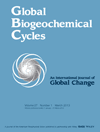
GLOBAL BIOGEOCHEMICAL CYCLES
Scope & Guideline
Innovating research for a healthier planet.
Introduction
Aims and Scopes
- Carbon Cycle Dynamics:
Research on carbon cycling processes in terrestrial, freshwater, and marine ecosystems, including mechanisms of carbon sequestration, emissions, and the impacts of climate change on carbon dynamics. - Nutrient Cycling and Stoichiometry:
Exploration of nitrogen, phosphorus, and other nutrient cycles, focusing on their interactions, transformations, and effects on ecosystem productivity and health. - Trace Element Biogeochemistry:
Studies on the distribution, cycling, and ecological impacts of trace elements in various environments, including oceans, soils, and freshwater systems. - Impact of Climate Change on Biogeochemical Processes:
Investigations into how climate change influences biogeochemical cycles, including feedback mechanisms and adaptations of ecosystems. - Modeling and Data Integration:
Development and application of models to simulate biogeochemical processes and assess the impacts of anthropogenic activities, utilizing data from various observational platforms. - Regional and Global Assessments:
Comprehensive assessments of biogeochemical cycles at regional and global scales, addressing issues such as land use change, pollution, and conservation strategies.
Trending and Emerging
- Climate Change and Carbon Sequestration:
There is an increasing focus on understanding how climate change affects carbon sequestration in various ecosystems, including forests, wetlands, and oceans, emphasizing the need for adaptive management strategies. - Interconnectedness of Biogeochemical Cycles:
Emerging research highlights the interconnectedness of various biogeochemical cycles, such as the interactions between carbon, nitrogen, and phosphorus, and their collective impact on ecosystem health. - Remote Sensing and Data Integration:
The use of remote sensing technologies and big data analytics to monitor and assess biogeochemical cycles is gaining momentum, allowing for more comprehensive and real-time assessments. - Anthropogenic Impacts on Biogeochemical Processes:
There is a growing emphasis on studying the effects of anthropogenic activities, such as urbanization and industrialization, on biogeochemical cycles and ecosystem services. - Restoration Ecology and Biogeochemistry:
Research focusing on the role of biogeochemical processes in ecosystem restoration efforts is on the rise, particularly in understanding how to enhance carbon storage and nutrient cycling in degraded ecosystems.
Declining or Waning
- Historical Analysis of Biogeochemical Changes:
Research focusing on historical biogeochemical changes over centuries is becoming less prominent, with a shift towards more real-time data analysis and immediate impacts of current environmental changes. - Microbial Processes in Soil Carbon Dynamics:
Although microbial interactions within soil carbon dynamics have been important, the focus has shifted towards broader ecosystem-level studies, leading to a decrease in specific microbial process studies. - Localized Pollution Studies:
Research dedicated to localized pollution impacts on biogeochemical cycles has seen a decline as more attention is directed towards global assessments and trends of biogeochemical cycles. - Traditional Agricultural Practices and Their Biogeochemical Impacts:
Studies on traditional agricultural practices and their historical impacts on biogeochemical cycles are waning in favor of innovative agricultural practices and their sustainability implications. - Static Models of Biogeochemical Processes:
There is a noticeable decline in the use of static models for biogeochemical processes, with a growing preference for dynamic, integrated modeling approaches that account for variability and change.
Similar Journals
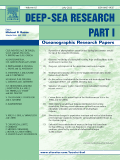
DEEP-SEA RESEARCH PART I-OCEANOGRAPHIC RESEARCH PAPERS
Fostering innovation in aquatic science and research.DEEP-SEA RESEARCH PART I-OCEANOGRAPHIC RESEARCH PAPERS is a prestigious journal published by Pergamon-Elsevier Science Ltd, dedicated to advancing the field of oceanography. With an ISSN of 0967-0637 and E-ISSN of 1879-0119, this journal provides a vital platform for researchers, professionals, and students to disseminate and access high-quality, peer-reviewed papers on various aspects of oceanographic research. Recognized in the top quartiles of aquatic science and oceanography (Q1 and Q2 respectively), DEEP-SEA RESEARCH PART I boasts a significant impact factor and ranks impressively within the Scopus database, positioning itself as a leading resource in its field. Although it does not provide open access, it remains a critical repository of knowledge for those invested in understanding the complexities of marine environments. This journal plays a crucial role in enhancing our comprehension of deep-sea ecosystems, promoting innovative research, and fostering interdisciplinary collaboration.

ISME Communications
Empowering Researchers to Shape a Greener TomorrowISME Communications is an esteemed journal dedicated to advancing the field of environmental microbiology and its multifaceted intersections with ecology, biogeochemistry, and biotechnology. Published by SpringerNature, this journal aims to disseminate cutting-edge research and innovative insights that address pressing global challenges through interdisciplinary approaches. With a commitment to open access, it provides a platform for researchers, professionals, and students to share their findings widely, fostering collaboration and knowledge exchange. Although the journal is relatively new, its potential for impactful contributions is substantial, making it an essential resource for anyone interested in the microbial processes that underpin ecosystem functioning and sustainability. The journal not only prioritizes the rigorous peer-review process but also supports the academic community's pursuit of excellence in environmental science.
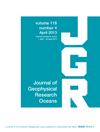
JOURNAL OF GEOPHYSICAL RESEARCH-OCEANS
Unveiling the Secrets of Ocean DynamicsJournal of Geophysical Research-Oceans is a premier interdisciplinary journal published by the American Geophysical Union, focused on the dynamic field of ocean sciences. With a rich history dating back to 1986, this journal has become a pivotal platform for researchers, providing a wealth of data and innovative insights into oceanographic processes and their essential role within the Earth's system. The journal enjoys an impressive impact factor and consistently ranks in the Q1 quartile across numerous categories, including Earth and Planetary Sciences and Oceanography, making it a respected source for cutting-edge research and reviews. Notably, it holds significant positions within Scopus rankings, further emphasizing its importance in shaping the scientific discourse surrounding oceanic phenomena. While available through subscription, the Journal of Geophysical Research-Oceans remains an invaluable resource for academics, industry professionals, and students eager to deepen their understanding of ocean dynamics and geophysical interactions.
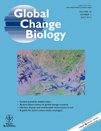
GLOBAL CHANGE BIOLOGY
Connecting Science to Policy in a Changing WorldGLOBAL CHANGE BIOLOGY, published by Wiley, is a leading journal dedicated to advancing the scientific understanding of the relationships between biological systems and global environmental changes. With an impressive impact factor placing it in the Q1 category across multiple disciplines—including Ecology, Environmental Chemistry, and Global and Planetary Change—this journal is essential for researchers, professionals, and students aiming to stay at the forefront of this dynamic field. The journal has a rich history since its inception in 1995, continually providing a platform for high-quality research that informs policy and management practices worldwide. Although it is not open access, the journal remains a valuable resource for those committed to exploring the complexities of ecological and environmental change. With a Scopus ranking of #3 in Global and Planetary Change and #6 in both Ecology and Environmental Chemistry, GLOBAL CHANGE BIOLOGY continues to shape the dialogue on the pressing environmental challenges of our time.
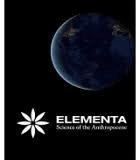
Elementa-Science of the Anthropocene
Transforming knowledge into action for a thriving planet.Elementa: Science of the Anthropocene is an esteemed Open Access journal published by University of California Press, dedicated to advancing interdisciplinary research that addresses the complexities of the Anthropocene epoch. Since its inception in 2013, it has established itself as a leading platform for the dissemination of innovative ideas across several disciplines, including atmospheric science, ecology, environmental engineering, geology, geotechnical engineering, and oceanography, achieving Q1 status in each of these fields as of 2023. With an impact factor reflecting its significant contribution to the scholarly community, Elementa ranks favorably in various Scopus categories, being placed in the 88th percentile in Earth and Planetary Sciences for both Geology and Oceanography. The journal's open-access model ensures that valuable research findings are accessible to a broader audience, fostering collaboration among researchers, professionals, and students dedicated to tackling pressing environmental challenges. Located in Oakland, California, Elementa continues to uphold a mission that underscores the importance of sustainable solutions and comprehensive understanding of the Anthropocene.
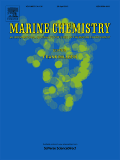
MARINE CHEMISTRY
Pioneering Research in Marine Chemical DynamicsMARINE CHEMISTRY, published by Elsevier, is a premier international journal that has been at the forefront of advancing knowledge in the fields of chemistry, oceanography, and environmental science since its inception in 1972. As indicated by its impressive impact factor and its numerous Q1 rankings in Chemistry, Oceanography, and Water Science and Technology for 2023, the journal is a vital resource for researchers and professionals dedicated to addressing critical issues related to marine environments and their chemical dynamics. The journal publishes high-quality research that explores various aspects of chemical processes in aquatic systems, aiming to bridge the gap between theoretical studies and practical applications. With a significant emphasis on interdisciplinary work, MARINE CHEMISTRY serves as a platform for sharing innovative research findings that contribute to the sustainability and health of marine ecosystems. Although it is not an open-access publication, its comprehensive repository of scholarly articles remains accessible through institutional subscriptions, providing limitless opportunities for growth and discovery in the field.
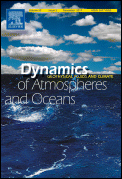
DYNAMICS OF ATMOSPHERES AND OCEANS
Fostering Innovation in Atmospheric and Oceanic SciencesDYNAMICS OF ATMOSPHERES AND OCEANS, published by Elsevier, is a renowned journal that has established itself as a vital resource in the fields of atmospheric science, oceanography, and geology. With a rich publication history stretching from 1976 to 2024, this journal provides a platform for high-quality research that addresses the complex interactions between the atmosphere and oceans, which are critical to understanding climate change and environmental systems. It enjoys a respectable impact factor and a reputable position within its category quartiles, specifically noted as Q2 in critical domains such as Computers in Earth Sciences and Oceanography. Researchers and professionals benefit from its indexed coverage, featuring a Scopus ranking that places it among the leading journals in its categories. Although it is not an open-access journal, readers can access its cutting-edge articles through institutional subscriptions or individual purchases. The journal aims to foster cross-disciplinary dialogue and innovation by publishing original research, reviews, and insightful commentary, making it a cornerstone for scholars, students, and practitioners committed to advancing knowledge in the dynamic interplay of Earth's atmospheric and oceanic systems.
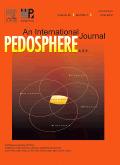
PEDOSPHERE
Exploring Soil Dynamics and Environmental InteractionsPEDOSPHERE, published by SCIENCE PRESS, is a leading journal in the field of Soil Science, holding a prestigious position in the Q1 category as per the latest evaluations, reflecting its high impact and relevance in the domain. Established in 1996, this journal is committed to advancing our understanding of soil-related processes and their interactions with various environmental components, providing a platform for innovative and high-quality research. With an impressive rank of #13 out of 159 in the Scopus classifications for Agricultural and Biological Sciences, PEDOSPHERE reaches the 92nd percentile, indicating its significance among scholarly publications. Although the journal operates under traditional access options, it remains an essential resource for researchers, professionals, and students keen on exploring the complexities of soil dynamics and sustainability. By bridging interdisciplinary methodologies and fostering collaboration, PEDOSPHERE plays a vital role in addressing global challenges related to soil management, conservation, and ecological balance.
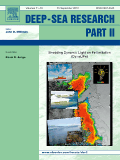
DEEP-SEA RESEARCH PART II-TOPICAL STUDIES IN OCEANOGRAPHY
Charting the Course for Oceanic ExcellenceDEEP-SEA RESEARCH PART II-TOPICAL STUDIES IN OCEANOGRAPHY is a leading journal in the field of oceanography, published by PERGAMON-ELSEVIER SCIENCE LTD. With an impressive ranking of Q1 in Oceanography and holding the 20th position out of 145 journals in the Earth and Planetary Sciences category, this journal provides a prominent platform for researchers and practitioners alike. Covering topical studies in oceanography since its inception in 1993, it continues to contribute significant insights into deep-sea research, enhancing our understanding of marine environments. Although the journal does not presently offer Open Access options, it remains a vital resource, appealing to students and professionals who seek to engage with innovative research and practical applications in the oceanographic community. The journal's ongoing commitment to excellence is evident as it plays a crucial role in advancing the field leading up to the present day and beyond.

Nature Reviews Earth & Environment
Fostering Open Discourse on Earth’s Vital IssuesNature Reviews Earth & Environment, published by SpringerNature, serves as an essential platform for researchers and professionals in the fields of environmental science, atmospheric science, and earth-surface processes. Since its inception in 2020, this distinguished journal has quickly established itself as a leading resource, achieving Q1 quartile rankings in multiple categories including Atmospheric Science and Pollution, reflecting its commitment to high-quality, impactful research. With an impressive Scopus ranking as #1 in its respective categories and a 99th percentile standing, the journal is pivotal for those seeking to explore cutting-edge advancements and critical insights in the interplay between our planet's environment and humanity. The publication encourages open discourse through its accessible content, aiming to inspire and inform its audience about pressing environmental challenges and innovative solutions. As it continues to converge through to 2024, Nature Reviews Earth & Environment stands out as a vital resource for anyone dedicated to understanding and preserving our planet.